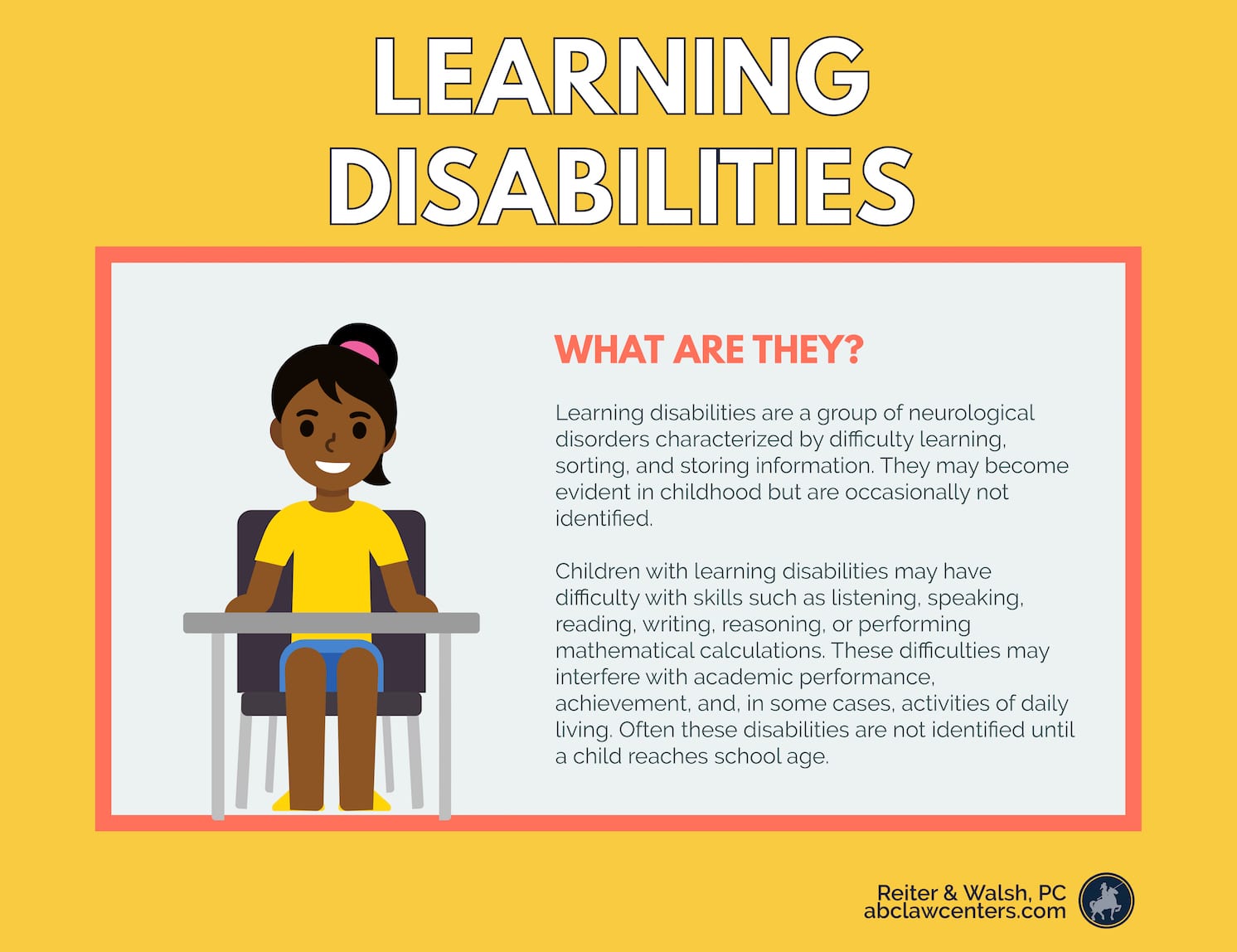Learning Disabilities in Children with Birth Injuries
Learning disabilities are a group of neurological disorders that become evident in childhood and are characterized by difficulty learning, sorting, and storing information. Children with learning disabilities may have difficulty with skills such as listening, speaking, reading, writing, reasoning, or performing mathematical calculations. These difficulties may interfere with academic performance, achievement, and, in some cases, activities of daily living. Often these disabilities are not identified until a child reaches school age.

Identifying Learning Disabilities
When a child has a learning disability, performance on standardized tests is usually below that expected for age, schooling, and level of intelligence. Some children find learning in a regular classroom difficult; specialized classes may be recommended to help these children receive more specific and intensive teaching. Learning disabilities are lifelong, but with proper intervention, training, and strategies, children with these disabilities can lead successful and independent lives.
Interventions for Learning Disabilities
Intervention and learning strategies for children with learning disabilities include:
Quality instruction
Managing learning disabilities begins with quality instruction, even before the learning disability is identified. Quality instruction includes specific teacher practices, including (but not limited to):
- Spacing learning over time (repetition of the same learning concept)
- Combining verbal descriptions with graphics
- Connecting and integrating abstract and concrete representations of concepts
- Quizzing students to monitor learning
- Helping students with time allocation
- Asking questions to develop greater awareness of the subject matter
- Using pre-worked solutions for problem-solving exercises.
| Response to Intervention Services |
| When children are not succeeding academically, “response to intervention” services often are provided before the child is formally evaluated for a learning disability. The child’s response to an intervention can help distinguish learning difficulty related to inadequate instruction from learning difficulty related to a learning disability. |
Specific interventions for reading disabilities, math disabilities and writing disabilities
There should be specific interventions for problems with reading, writing, and math. For example, instruction for children with writing disabilities should incorporate explicit and strategic instruction in handwriting accuracy, handwriting fluency, phonologic awareness and phonics (to help with spelling), language conventions (spelling and grammar), writing text, and composition.
Instruction for children with math difficulties should include explicit and strategic instruction in number sense, counting strategy, math vocabulary, arithmetic combination and calculation skills, word problems, visual-spatial relationships, and organizing and planning.
Explicit instruction refers to instruction that focuses on the child gaining basic academic skills, largely by repetition, memorization, and conducting practice drills.
Strategic instruction refers to teaching the student the procedure or process used to approach learning systematically.
Other strategies include explaining learning objectives, having a clearly organized lesson plan, reviewing concepts multiple times, providing examples, and proceeding through the material in small steps.
Causes and Risk Factors of Learning Disability: Birth Injuries
Risk factors for learning disabilities include prematurity, developmental and mental health conditions (e.g., attention deficit hyperactivity disorder (ADHD)), neurological conditions (brain injury and seizure disorders) and a history of a brain or central nervous system infection (e.g., meningitis). Birth injuries that are often associated with learning disabilities include:


Birth Injury Lawyers Helping Children with Learning Disabilities
If you or a loved one had a difficult or traumatic birth, and your child now has learning disabilities, it may be worthwhile to have a birth injury attorney look over your medical records to see if medical malpractice played a role.
The law offices of ABC Law Centers: Birth Injury Lawyers focus only on birth injury. We’ve helped many families secure their children’s future. Please feel free to reach out to us if you’d like a second opinion about the events surrounding your child’s birth.
Featured Videos
Posterior Position
Hypoxic-Ischemic Encephalopathy (HIE)

Featured Testimonial
What Our
Clients Say…
After the traumatic birth of my son, I was left confused, afraid, and seeking answers. We needed someone we could trust and depend on. ABC Law Centers: Birth Injury Lawyers was just that.
- Michael


